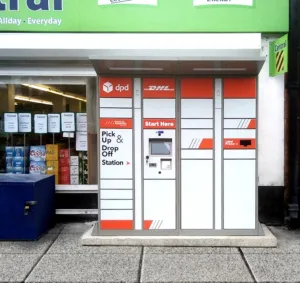By Jess Morris, Head European Marketplace Manager at B-Stock
For retailers, a strong end to Q1 is a battle amidst inflationary pressures and the rising cost of living. In the UK alone, about £6 billion worth of goods were returned last year, according to GlobalData. With that massive amount of merchandise, retailers are left searching for ways to recoup these losses. B-Stock exclusive data helps shed light on those returns and what it means for the rest of 2023.
How retailers can make returns less of a problem
It’s no secret that retailers are left with returned and excess stock long after the gift-giving season is over. This applies to apparel retailers all the way through to home goods stores. While we can see influxes of returns in particular categories throughout the year, there is something to note about the beginning of the year. According to ParcelLab, returns between Christmas and new year rose by 26% to more than 50,000 parcels. That’s a problem for retailers because it can be too costly for high-street shops and online businesses to store this inventory for the next season.
What retailers are learning is that inventory that would ordinarily take up warehouse space, or otherwise discarded via landfills, can now be put back into use via B2B online auctions. By leveraging a competitive bidding landscape with an auction-style setup, retailers can recover some of that initial investment.
Key categories of surplus stock and customer returns have been prevalent following the Christmas period. For example, B-Stock sees 10% more bidders in the following categories: consumer electronics, mobile, and health and beauty in Q1 than in Q4. Mobile is another category that will usually have more expensive items (or retail price per unit) in Q4 – this is about 29% higher than other quarters of the year. This is likely thanks to the popularity of mobile phones as Christmas gifts.
Surplus stock trends – what buyers are looking to purchase now to hold for later to resell
Business buyers can secure job lots to later resell online, like on eBay or Poshmark, which is set to have a UK launch or in-person at pound shops. They find success doing this throughout the year, but a quick look at the calendar will tell you what should be on the radar next.
Now would be the time that retailers are looking to shed winter-weather inventory like coats, jumpers, and snow boots, for example. At the end of summer is when you see discounts on patio sets, inflatable toys, and warm-weather apparel. All resellers need to do is buy these goods at the lowest prices (once it reaches off-season) and save it for when it comes back in – which is when it will earn the highest resale value.
For categories like furniture, there are also a few tell-tale signs. In the US, most furniture sales centre around occasions like Memorial Day, Fourth of July, and Labor Day – all warmer-season holidays. It turns into a nice end-of-summer leap for clearance furniture when retailers are dealing with customer returns and overstock. This makes it easy to predict surplus furniture stock fluctuating higher in the spring and lower in the winter. Retailers should take this into consideration for May and August bank holidays.
The reason why retailers should consider a secondary market solution for off-season stock
Creating a sustainable strategy to manage off-season and clearance stock should be top-of-mind for retailers as we move through the year. These items are being introduced into the secondary market and the appetite for second-life goods is only growing.
eBay’s third annual Recommerce Report found 90% of buyers purchased pre-loved goods in the past year — and that sustainability is increasing in importance to both sellers and buyers.
Second-hand apparel in particular is helping consumers stretch their budgets. According to ThredUp’s 2022 Fashion Resale Market and Trend Report, 58% of consumers say second-hand has helped them in some way during a time of inflation. Resellers are meeting the demands of these shoppers as retailers continue to sell their off-season stock in bulk.
All in all, utilising a value recovery platform for off-season stock is a good strategy for retailers looking to reduce the time and money spent on inspecting returned goods. Additionally, it frees up warehouse space and reduces the amount of tied-up capital.
What trends can we expect to see with returns throughout the coming year?
Industry research shows 1 in 3 items last year was returned. We also know that for the first time ever, December replaced January as the busiest month for online returns. We expect to see more retailers experiment with charging for returns, following the lead of retailers like Zara, Boohoo, and most recently New Look. Hopefully reducing the overall rate of returns.
Whatever the rest of 2023 holds, it’s clear that retailers need to implement an ongoing strategy for dealing with their customer returns. Since clearance stock has proven to be in high demand in secondary markets, retailers can seize the opportunity to combat these rising numbers with online, B2B auctions. Resellers from the UK to the US make a whole business of obtaining this inventory, and ultimately, fuel the circular economy by doing so.







